In August 2024, Beat of Hawaii broke the story of Breeze Airways’ ambitions to expand into Hawaii. The airline is now back in the news with talk of its regulatory push for long-haul flights, including Hawaii and transatlantic routes. This might sound like a major step for this low-cost carrier, and many are still not convinced Breeze will actually succeed in carving out a meaningful foothold in Hawaii’s ultra-competitive commercial aviation market.
It all started with Hawaii Express and 747 service.
David Neeleman, Breeze Airways’ founder, has a long and storied history of interest in Hawaii aviation. Decades ago, he was involved in the ill-fated Hawaii Express, a budget airline that failed in the 1980s.
Dubbed the “Hawaii Cheap Ticket Express,” the airline was a bold but quickly unsuccessful attempt to disrupt the Hawaii airline market in 1982, even featuring Boeing 747 service.
Hawaii Express only remained in business for about one year. Despite its collapse, Neeleman maintained his aspirations to connect Hawaii with low-cost air service. His current push for Hawaii flights through Breeze Airways revives those ambitions, bringing his career full circle while reigniting questions about the viability of such ventures once again in Hawaii’s ultra-competitive market.
A reemerging narrative from Breeze.
Breeze Airways has built its reputation by connecting underserved markets and secondary cities across the U.S. The carrier has rapidly expanded, now touting more than sixty cities in thirty states. According to Breeze, more than 85% of its routes operate without direct competition—a testament to its focus on overlooked destinations and adding to the curiosity about its ambitious Hawaii flight goals.
The latest updates spawned directly by Neeleman suggest Breeze is pushing for ETOPS certification (required for extended overwater flights), hoping to commence long-haul flights by late 2025. But what’s missing from these updates is specificity about where Breeze plans to land and how it intends to compete with well-established carriers already firmly dominating the market.
SFO vs. San Bernardino to Hawaii: which makes sense for Breeze?
Much of the recent speculation around Breeze’s Hawaii plans centers on its San Francisco International Airport (SFO) operations. However, could that be unlikely? SFO and the entire Bay Area are already saturated hubs for Hawaii flights, with United, Alaska/Hawaiian, and Southwest offering a plethora of daily options. Adding Breeze to this mix doesn’t appear to align with its model of focusing on secondary airports and underserved routes.
Instead, San Bernardino (SBD) seems perhaps a better fit with its designs. SBD aligns more closely with Breeze’s strategy of leveraging secondary markets and could tap into Southern California’s massive and seemingly insatiable demand for Hawaii flights.
This includes the Inland Empire, parts of Orange County, and the growing Coachella Valley. Breeze’s “BreezeThru” model—allowing passengers to connect through intermediate stops without changing planes—could bring passengers from farther afield through SBD while also starting or ending trips there. It’s worth noting that Breeze does not operate a traditional hub-and-spoke airline model; instead, it focuses on point-to-point routes connecting smaller markets directly.
Intense competition awaits Breeze Hawaii flights.
Hawaii’s aviation market is anything but underserved. In addition to United’s dominance at SFO, Alaska Airlines has expanded its Hawaii routes following its acquisition of Hawaiian Airlines. Southwest continues to offer robust mainland-to-Hawaii services from the other Bay Area airports, further intensifying the competition. Breeze will face an uphill battle entering this saturated market, where passengers already have a wealth of options.
Neeleman’s statement about wanting to connect “secondary and tertiary cities” to Hawaii suggests the airline might aim to avoid head-to-head competition. However, even with this approach, the economics of such routes may present significant challenges. Operating flights to Hawaii requires high seat occupancy and yields to cover costs, particularly on routes with lower demand.
Operational hurdles remain for Breeze.
Beyond competition, Breeze still needs regulatory approvals to operate long-haul routes. ETOPS certification is crucial for its fleet of Airbus A220-300, the aircraft Breeze plans to use for Hawaii flights. While the A220’s fuel efficiency and range make it attractive, securing the necessary certifications often takes more time and resources than airlines anticipate, as Southwest learned when it first sought Hawaii flights.
Launching Hawaii flights will also require significant marketing to attract passengers unfamiliar with Breeze’s brand. Unlike another Hawaii aspirant JetBlue, which has built a strong reputation for customer service and comfort, Breeze has yet to establish a similarly compelling identity among Hawaii-bound travelers.
Is Breeze’s Hawaii ambition realistic?
While Breeze’s expansion plans are ambitious, we remain skeptical about its ability to succeed in Hawaii. The airline’s focus on underserved markets is compelling; however, Hawaii’s competitive landscape and operational complexities could prove insurmountable. San Bernardino might be an interesting entry point, but even that is far from guaranteed to tap into Southern California’s fragmented market effectively.
We’ll continue monitoring Breeze’s regulatory progress and route announcements for now. If the airline does move forward with Hawaii flights, it will be interesting to see how it addresses the challenges outlined.
What do you think about Breeze’s Hawaii aspirations?
Get Breaking Hawaii Travel News
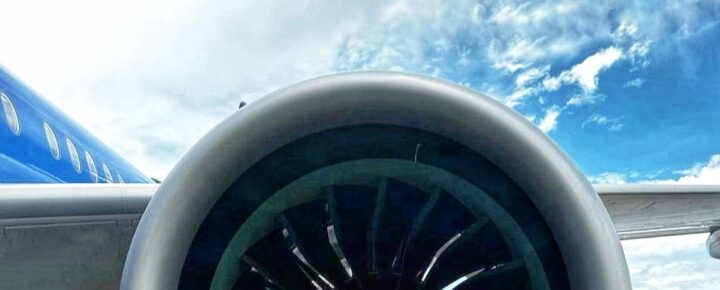
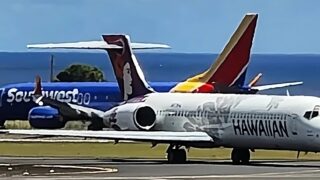
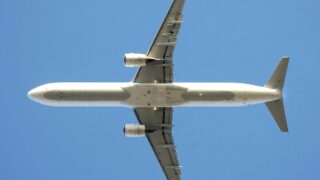
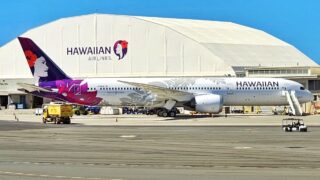
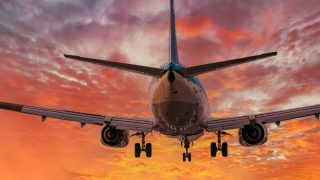
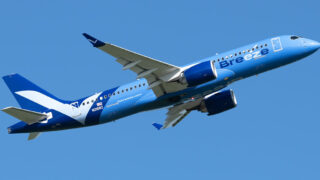
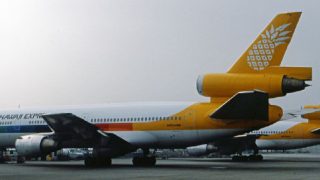
Allegiant tried it from Stockton (SCK), then stopped all Hawaii service. That would be closer to all of the Bay Area and has appropriate runways, etc. The biggest factor there is fog in the winter months.
“BREEZE” is basically “low-cost airline” (in reality, there’s no such thing – just fewer amenities, and ‘passenger comfort’) with its HQ in Utah and co-founded by a JetBlue guy. I suspect they will go the way of other low-cost dodo birds in the industry and will not make it in the long run nor make headlines or blaze a new path along the airways by flying a B-747 to-from ‘da Islands … but I have to give them credit for trying to bring back the most comfortable ride in the skies on the Mainland to Hawai’i route …
Two of my former airlines flew “The WHALE” (as we colloquially called that finest creation of Boeing to ever grace the skies) to the Islands. Both started in 1971, one year after Pan Am began its B-747 service to Hawai’i …
It was my privilege to eventually sit in all the seats of “the office” at the pointy-end of that Big Bird and be based in “Paradise” to boot …
Aloha ʻOe to some of the best years of my life …
Florida would benefit from some Breeze flights to Hawaii. There is not a single flight out of Florida to Hawaii. Hawaiian Airlines used to offer a nonstop out of Orlando (MCO) but canceled the route after about 9 months.
Sacramento would be an attractive market. I Currently only Hawaiian flies non stop to Maui. I Alaska left this route when Southwest entered but now neither of them serve this route.
We would welcome Breeze Airlines. We book with Breeze to fly to Upstate New York from Kauai to Las Vegas and on to Syracuse. Low cost, great planes and awesome flight attendants.
When it comes to non stop options from the bay area to various islands, I would disagree about there being plenty of options. There use to be, but now there are significantly less non stop options 🙁
This feels like another marketing ploy to keep Breeze’s name in the headlines without actually committing to Hawaii flights ever.
ETOPS certification is no joke. Breeze might be underestimating how long it will take to get everything in place given how it went down at Southwest.
I remember when Hawaii Express failed decades ago, and I don’t know if I see what’s changed that would make this attempt more successful than that one.
I purchased tickets for my family on Hawaii Express in 1982 only to have them go BK two months before departure. I wouldn’t trust this idea unless you have money to lose.
Yes call me intrigued by the idea of Breeze flights from secondary cities. It would be great for people who don’t live near major hubs like me here in Palm Desert.
Yes San Bernardino makes so much more sense than SFO. If they’re serious about underserved markets, they need to stick to their strengths.